[COLOR="PaleTurquoise"]
2014.05.19
[/COLOR]

The Dragon Painter (1919) and Wrath of the Gods (1914) -DVD5-Silent Japanese-English Intertitles [DDR]
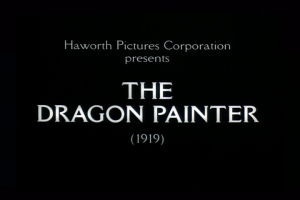
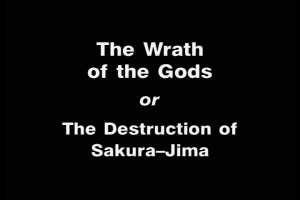
The Dragon Painter (1919)
The Dragon Painter is a 1919 silent film. It is based on a novel, The Dragon Painter, written by Mary McNeil Fenollosa.
It stars Sessue Hayakawa as a mentally disturbed young painter who believes that his fiancée, Hayakawa's wife Tsuru Aoki, is a princess who has been captured and turned into a dragon.
It was directed by William Worthington and filmed in Yosemite Valley, Yosemite National Park, California, USA.
CAST: - Sessue Hayakawa, Toyo Fujita, Edward Peil, Sr., Tsuru Aoki
Directed by William Worthington
Written by Richard Schayer
Music by Mark Izu, 2005 restoratio
Musical Accompaniment Mark Izu Ensemble
Live Katsuben Performance Midori Sawato
SYNOPSIS:- The Dragon Painter (1919) Silent
Tatsu (Hayakawa) is a young painter who lives within the mountains of Hakawa, Japan, doing a series of paintings and disposing of them upon completion, shouting to the gods to return his fiancée, a princess who he believed was turned into a dragon. Tatsu then heads to a nearby village, demanding some paper to the locals. His unusual behavior caught the attention of a man named Uchida (Fujita), a friend of the famous painter Kano Indara (Peil, Sr.), who seeks someone to be Indara's prodigy as Indara has no son to be his heir and continue the family bloodline of paintings.
One day, one of Tatsu's discarded paintings came into Uchida's possession. Amazed at the artwork, Uchida invites Tatsu to Tokyo, claiming that Indara knows the whereabouts of his lost princess. When Tatsu arrives, his wild behavior surprises Indara and caused a ruckus until Indara presented the lost princess, who he explains is in the form of his only daughter, Ume-ko (Aoki). Tatsu demands Ume-ko's hand in marriage, which Indara agrees on the condition that Tatsu be his son and disciple to carry on the Indara name.
Shortly after their marriage, Tatsu is unable to paint, explaining that ever since he found his happiness, he has no reason to do so. The Indaras tried to encourage Tatsu to paint but to no avail. Realizing that Tatsu's longing to find his lost princess is what granted him his ability to paint, Ume-ko tells her father that by her death, Tatsu's talent may be restored. The following morning, Tatsu discovered a letter from Ume-ko, saying that she had committed suicide in hopes that it would restore Tatsu's ability to paint. Distraught at what happened, Tatsu attempts suicide by drowning at a nearby waterfall, but was unsuccessful. Tatsu's sorrow continue to grow as time passes until one day he saw what appeared to be Ume-ko's ghost at the family garden, which motivated him to paint once more. Tatsu's latest work gave him and the Indaras international recognition, but shortly after his success, his sorrow returned. This prompted Ume-ko, who was in hiding all this time, to return to an amazed Tatsu. The film ends with Tatsu painting in the mountains with Ume-ko by his side.
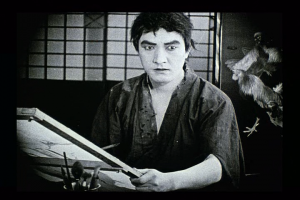
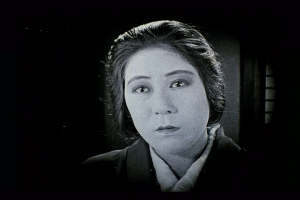
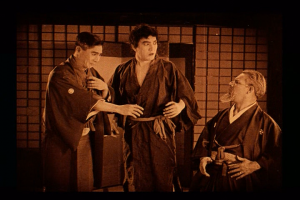
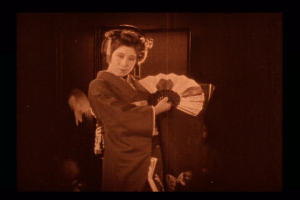
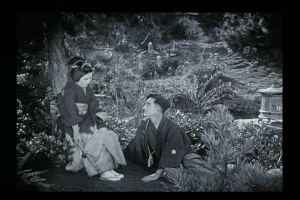
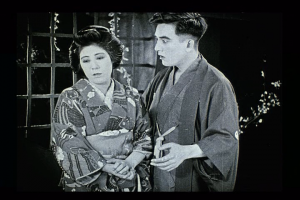
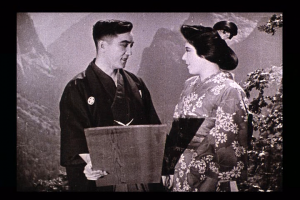
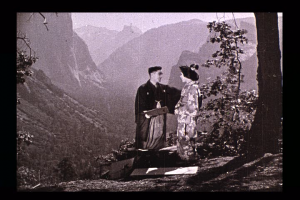
======================================================================================
The Wrath of the Gods - The Destruction of Sakura-Jima (1914)
The Wrath of the Gods is a 1914 US silent drama film directed by Reginald Barker. The film features Sessue Hayakawa, Tsuru Aoki, Frank Borzage, Thomas Kurihara and Henry Kotani in the lead roles. It was released in Japan on 15 September 1918. This was the first feature film appearance of Sessue Hayakawa and the directorial debut of Barker.
The film was banned in Japan for 'bringing dishonor to the country'.
CAST:-
Sessue Hayakawa as Lord Yamaki
Tsuru Aoki as Toya San
Frank Borzage as Tom Wilson
Thomas Kurihara as Takeo
Henry Kotani as Mr. Hoshida
SYNOPSIS:- The Wrath of the Gods - Te Destruction of Sakura-Jima (1914)
Baron Yamaki (Sessue Hayakawa) is a fisherman who lives along with his daughter Toya San (Tsuru Aoki) on an island. The island is inhabited by Buddhists and Yamaki had been cursed by Buddha for an affront by one of his ancestors who in a murderous rage, defiled an altar of Buddha in the nearby temple. The curse was that if his daughter married anyone then the nearby volcano would erupt. Toya finds it difficult to form relationships with boys because the village prophet Takeo (Thomas Kurihara) spreads the rumour that she is cursed. She is therefore unwilling to continue her father's acceptance of the curse. When Yamaki takes Toya-san to the Buddha shrine in the garden of his house to pray and try to get the curse removed she vents her feelings about the god's unfairness.
An American sailor, Tom Wilson (Frank Borzage), whose ship has been wrecked in a storm comes to them for help and shelter. Wilson falls in love with Toya and teaches her about Christianity. To the consternation of her father, Toya decides to convert and marry Tom at the local Japanese-American mission. However, her father also converts. The locals, who have been stirred up by Takeo, go on a murderous rampage against the family. They first go to the chapel but the newlyweds evade them and so they go to the beach house instead. When the mob reaches his house Yamaki throws out the Buddha statue he had set up in his house and puts a cross in its place. The villagers are infuriated by this; they beat him to death beneath the cross and burn his house. Eventually, the volcano erupts and the village is destroyed. Takeo dies in an avalanche. Only Tom Wilson and Toya San survive. They are taken away from the destroyed village by a United States merchant vessel. At the end of the film, Tom tells his bride, "Your gods may be powerful, Toya San, but mine has proved his omnipotence. You are saved to perpetuate your race."
PRODUCTION NOTES:-
On 12 January 1914, a volcano erupted on the island of Sakura-Jima in Kagoshima prefecture, in the southern part of Japan. It was one of the biggest disasters in the history of Japan. Producer Thomas H. Ince immediately decided to make a film based on the incident. The newspaper Toledo Blade reported on 24 January 1914 that "News of the eruption was hardly a day old before Mr. Ince had built in Santa Monica canyon a whole Japanese village". Ince had constructed a huge village in his studio Inceville and decided where possible to use Japanese people instead of Americans as extras. He gathered workers from the southern parts of California who were to work as peasants in the film. Approximately 1,000, mostly Japanese, extras were used. The film's shooting began on 27 January 1914, just 15 days after the eruption finished.
To help publicize the production, Ince reported to the newspapers that lead-actress Tsuru Aoki was a native of the island of Sakura and she had lost all her relatives in the eruption - she was actually from Obara Tsuru, a city in the Kyushu area, which was located 180 miles north of Sakura-Jima. Ince also embroidered her biography so that she would appeal to the middle-class audiences as the heroine of a melodrama, claiming that she was the daughter of an illustrious Japanese artist. The biographical-type publicity added emotional and psychological authenticity to the character that Aoki played in the film.
Sessue Hayakawa, Aoki's soon-to-be husband, played her father in the film; they married on May 1 just before the film's release. Hayakawa was paid $500 a week and, seeing another chance to publicize his production, Ince stated that Hayakawa was "the highest paid of all Oriental stars."The film's shipwreck scene was shot off the coast of Santa Monica, and an erupting volcano was also included among its lavish effects.
The film was targeted at a middle class audience and a large-scale publicity campaign was organized by the New York Motion Picture Corporation. Four months prior to the release, New York Motion Picture Corporation put an ad in the newspaper New York Clippers 14 February 1914 edition, announcing "Wait for The Wrath of the Gods." Major journals carried a full-page advertisement for the film every week with pictures, various ad lines and photographs taken on the film set. An advertisement for the film featured an angry looking statue of Buddha and a young woman in a kimono praying in front of it. The marriage of the lead actors Tsuru Aoki and Sessue Hayakawa was also included in the publicity campaign. The film was released in a new theater called The Strand on 7 June 1914.
The film has a rating of 5.8 out of 10 on IMDb. It was praised for its happy ending even though the Aoki's character lost her village. Gina Marchetti proposed in her book Tragic and Transcendent Love in the Forbidden City that the film was "simultaneously warning against miscegenation while celebrating romantic love."The lead actress Tsuru Aoki's acting was highly appreciated for adding 'the sense of naturalness to the archetypal narrative between Japan and the United States.'
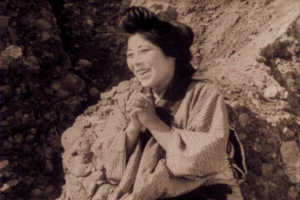
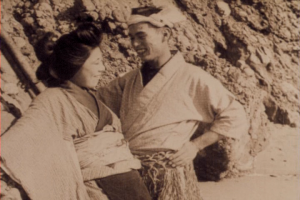
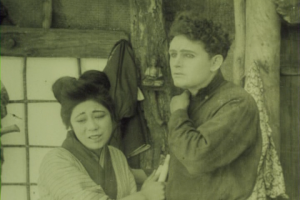
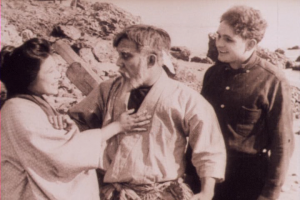
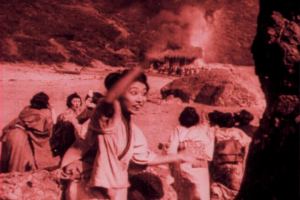
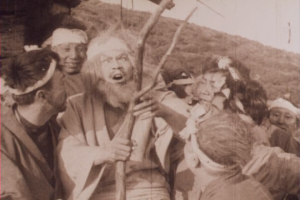
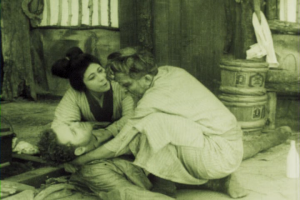
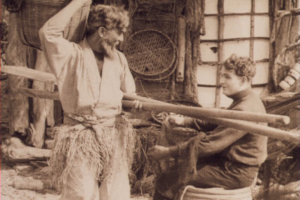
TECHNICAL SPECIFICATIONS:-
Video Codec: MPEG-2
Video Bitrate: 4999 kbps
Video Resolution: 720x480
Video Aspect Ratio: 1.333:1
Frames Per Second: 23.976
Audio Codec: AC3
Audio Bitrate: 192kb/s CBR 48000 Hz
Audio Streams: 2
Audio Languages: NONE - Silent Film
RunTime 102 mins
Subtitles: English Intertitles
Ripped by: Trinidad [DDR]
Duration: 102 mins


















